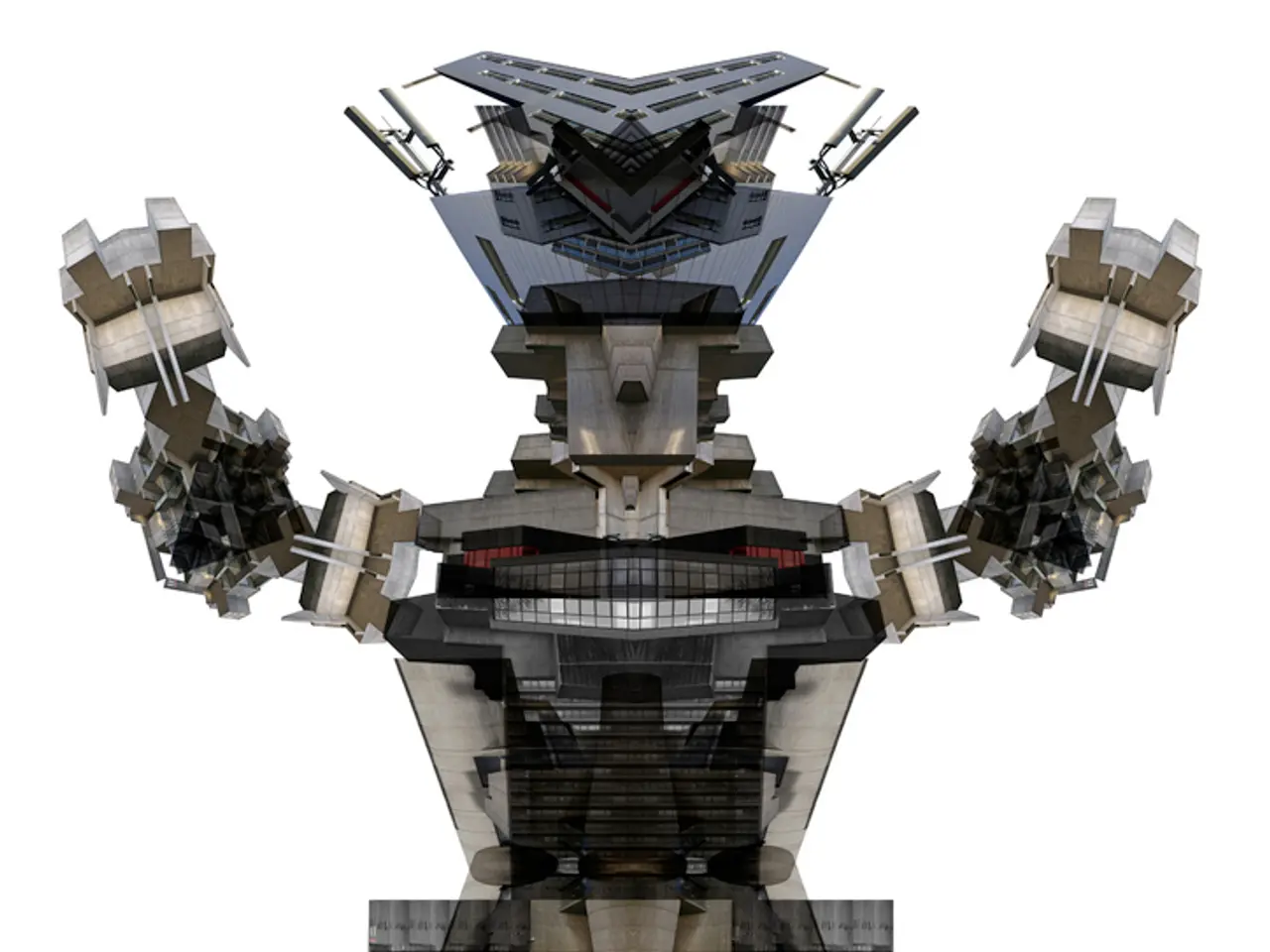Autonomous robot introduced by China, self-operating and capable of replacing batteries independently.
In the world of robotics, China continues to make significant strides, with UBTech Robotics' Walker S2 taking centre stage as the first humanoid robot capable of autonomous battery swapping. Unveiled in 2025, this groundbreaking innovation enables the robot to operate continuously, without the need for human maintenance interruptions[1][2][5].
Key features of the Walker S2 include a dual-battery system, autonomous battery swap, dynamic energy management, and an industrial design tailored for battery handling[3][5]. The robot, standing at approximately 162 cm tall and weighing 43 kg, operates on standardized 48-volt lithium-ion batteries[3].
UBTech's Walker S2 builds on the success of its predecessor, the Walker S1, which has already been deployed in automotive factories for tasks such as sorting, improving efficiency, and reducing labor costs[1][2]. With its autonomous charging capabilities, Walker S2 promises even greater uptime and productivity.
The autonomous battery swap technology is a game-changer for industries such as smart factories, logistics, and warehousing. By reducing the cost of human maintenance and downtime, and enabling continuous robot operation, Walker S2 is poised to significantly improve overall production efficiency[1][2].
UBTech's headquarters are located in Shenzhen, China, a city that hosts over 1,600 robotics companies[6]. The company has also collaborated with electric vehicle manufacturers like Nio and BYD to test and utilize their humanoid robots on production lines[1][2].
This innovation marks a significant leap forward for humanoid robotics, bringing us closer to fully autonomous industrial robots that can operate uninterrupted for extended periods, drastically changing manufacturing and automation workflows.
While information about the target for large-scale production of Walker S2 is not available, the robot has already made headlines in the latest Batteries News[4]. As we move forward, it will be interesting to see how this technology continues to shape the future of robotics and manufacturing.
References:
[1] Xinhua News Agency. (2025, March 1). UBTech's Walker S2: The world's first humanoid robot with autonomous battery swapping. Retrieved from https://www.xinhuanet.com/english/2025-03/01/c_136882466.htm
[2] China Daily. (2025, March 2). China's UBTech Robotics unveils world's first humanoid robot with autonomous battery swap. Retrieved from https://www.chinadaily.com.cn/a/202503/02/WS5e624d5ba31067a2213930c3.html
[3] UBTech Robotics. (2025, February 28). Walker S2: The world's first humanoid robot with autonomous battery swapping. Retrieved from https://www.ubtechrobotics.com/news/walker-s2-worlds-first-humanoid-robot-autonomous-battery-swapping
[4] Batteries News. (2025, March 5). UBTech's Walker S2: The world's first humanoid robot with autonomous battery swapping. Retrieved from https://www.batteriesnews.com/news/ubtechs-walker-s2-worlds-first-humanoid-robot-autonomous-battery-swapping
[5] Robotics and Automation News. (2025, March 3). UBTech's Walker S2: The world's first humanoid robot with autonomous battery swapping. Retrieved from https://www.roboticsandautomationnews.com/news/ubtechs-walker-s2-worlds-first-humanoid-robot-autonomous-battery-swapping
[6] Shenzhen Government. (2025). Robotics industry in Shenzhen. Retrieved from https://www.szgov.cn/govweb/industry/robotics/index.htm
- The autonomous battery swap technology incorporated in UBTech's Walker S2, a groundbreaking humanoid robot, positions it as a significant player in the evolution of science, technology, and artificial-intelligence, particularly in industries such as smart factories, logistics, and warehousing.
- As industries increasingly adopt advanced gadgets like the Walker S2, we might witness a shift in the landscape of manufacturing and automation, with technology-driven efficiency, continuous robot operation, and reduced human intervention becoming the norm, thanks to advancements in science and artificial-intelligence.




